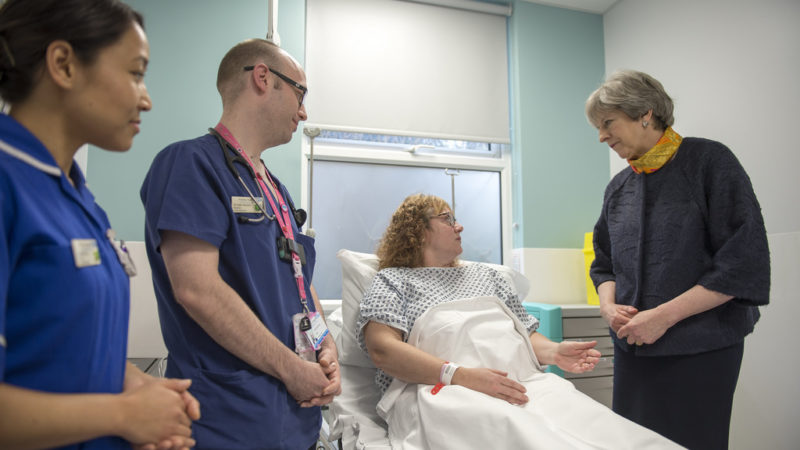The PM has just announced a grand new plan to invest in the National Health Service. But with or without 'Brexit dividend' experts and patients know it's not enough.

Much ado has been made about Theresa May’s announcement this Monday that the National Health Service (NHS) will be receiving £20 billion by 2023.
But is this “birthday present” enough to save our NHS on its 70th anniversary?
What are the government plans?
May has announced that NHS England will see an annual 3.4% funding increase in real terms, between 2019 and 2024.
The funding is supposed to come in part from a much debated “Brexit dividend”, which the government argued would bring £9 billion into the struggling health services.
Some of the extra money for the NHS will come from money we’re no longer sending to the EU, says @theresa_may pic.twitter.com/67RPGMu75C
— BrexitCentral (@BrexitCentral) June 18, 2018
Theresa May also said that further details on where the cash for the NHS will be found will be given out in “due course”. Not the most reassuring of statements.
What is the “Brexit dividend”?
If one is to believe the PM, the “Brexit dividend” is cash that would have otherwise been sent to the European Union and will be used on British matters after Brexit. The problem is that nobody believes the PM’s maths.
The Office for Budget Responsibility has warned that Brexit will actually lessen tax revenues in Britain. At a great scale than that of money saved from exiting the EU.
Institute for Fiscal Studies (IFS) director, Paul Johnson, even told the BBC:
“Actually the public finances will be £15 billion or so worse off [after Brexit], not better off, so there really just isn’t money there for a Brexit dividend.”
The infamous “We send the EU £350 million a week: let’s fund our NHS instead” slogan plastered on a big red coach by the Leave campaign has long been proven misleading.
Beyond the “Brexit dividend”, May has not explained where most of the money will come from other than suggesting that “taxpayers will have to contribute a bit more.” What kind of tax increase this would amount to remains a Cabinet secret.
Is the investment even enough?
No. While the 3.4% funding increase is welcomed, the IFS has argued that the NHS needs something along the lines of a 5% increase in the short run to make a “modest improvement” on its current situation. And even after that it would still need 4% more than it’s currently getting.
Eight years oh Tory underfunding, cuts and mismanagement mean the NHS hasn’t met any of it key performance targets on waiting lists, A&E & cancer for two years. Theresa May just conceded has no answer for when patients can expect to see any improvements
— Jonathan Ashworth (@JonAshworth) June 18, 2018
Plus, the funding increase announced focuses only on NHS England. But health professionals have argued that the scale of the crisis is much wider and includes other frontline services, particularly in social care.
In fact, hundreds of doctors and nurses have signed an open letter to May and her Cabinet arguing the funding increase is not enough. And the chief executives of three major health trusts have issued similar letters to Chancellor Philip Hammond and the PM.
The letter, published in the Daily Mirror, read:
“With an offer that falls short of what is needed this Government has shown once again that it can’t be trusted to care for the NHS.”
With dubious sources for funding and a deficient investment from the start, Theresa May’s plans resemble more and more “a sticking plaster” than a real solution to the NHS’ growing ailments.
Not what the doctor ordered.
Joana Ramiro is a reporter for Left Foot Forward. You can follow her on Twitter for all sorts of rants here.
To reach hundreds of thousands of new readers we need to grow our donor base substantially.
That's why in 2024, we are seeking to generate 150 additional regular donors to support Left Foot Forward's work.
We still need another 117 people to donate to hit the target. You can help. Donate today.



